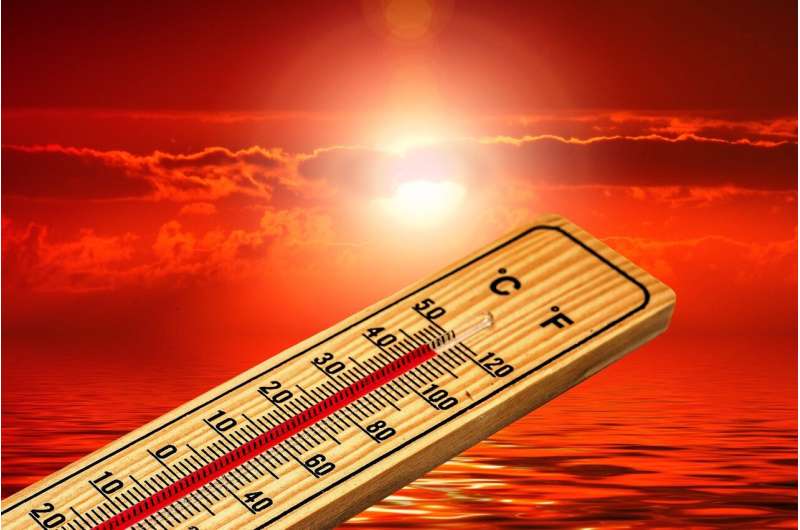This article has been reviewed according to Science X's editorial process and policies. Editors have highlighted the following attributes while ensuring the content's credibility:
fact-checked
peer-reviewed publication
proofread
Heat vulnerability linked to worse stroke severity, offering a new metric for stroke risk amidst climate change

A new Harvey L. Neiman Health Policy Institute (HPI) study found that living in a neighborhood with higher vulnerability to environmental heat predicted worse stroke severity.
Investigators from HPI's PRIME research center at Northwell Health, the largest health system in New York state, evaluated all acute ischemic stroke admissions to Northwell's comprehensive stroke center over a decade. Each stroke patient was assigned a score from the Heat Vulnerability Index (HVI), a neighborhood-level measure of heat-related mortality risk. The patient's HVI was then assessed relative to the severity of stroke upon admission.
The results showed that patients living in a high-HVI neighborhood—the two highest ranks of heat vulnerability—were 40% more likely to have severe stroke. The study was published August 20 in the International Journal of Environmental Research and Public Health.
Climate change is creating higher surface temperatures across the globe, including in the United States, and the effects are widespread. Exposure to heat is a risk factor for stroke incidence and mortality, but studies have not looked at whether the factors that make people more vulnerable to heat also impact stroke severity.
Jason Wang, Ph.D., lead author and professor at the Donald and Barbara Zucker School of Medicine at Hofstra/Northwell, and colleagues used HVI data from the New York City Department of Health for all zip codes in the region. The HVI includes environmental (i.e., surface temperature and green space) and social (i.e., poverty and race) factors that reveal disparities at the neighborhood level.
"A strength of the HVI is that it considers both environmental and social determinants, providing a more holistic view of heat-related disparities to inform policymaking efforts to reduce stroke disparities," explained Dr. Wang.
Pina C. Sanelli, MD, MPH, senior author and professor at the Donald and Barbara Zucker School of Medicine at Hofstra/Northwell, adds, "Our study indicates the value of HVI as a novel modifiable stroke risk factor that can aid population health initiatives to improve environmental and social determinants of stroke disparities."
The common stroke severity measure, the NIH Stroke Scale, assesses a range of stroke severity measures such as consciousness, vision, speech, motor impairments and facial paralysis. The risk found for higher heat vulnerability was the most significant for the highest threshold of stroke severity, and thus the greatest neurological impairment to the patient.
"This study is particularly important now, when policy makers in the U.S. are working to address climate change amidst a demographic shift, with an increasing proportion of our population at older ages and thus already at higher risk for stroke," noted Elizabeth Rula, Ph.D., Executive Director of the Neiman HPI.
"Access to advanced imaging and treatment strategies is critical for improving stroke outcomes, as this group's prior research has shown. The HVI can help direct efforts to improve access to these life-saving procedures in vulnerable areas."
More information: Jason J. Wang et al, Association between Heat Vulnerability Index and Stroke Severity, International Journal of Environmental Research and Public Health (2024). DOI: 10.3390/ijerph21081099





















